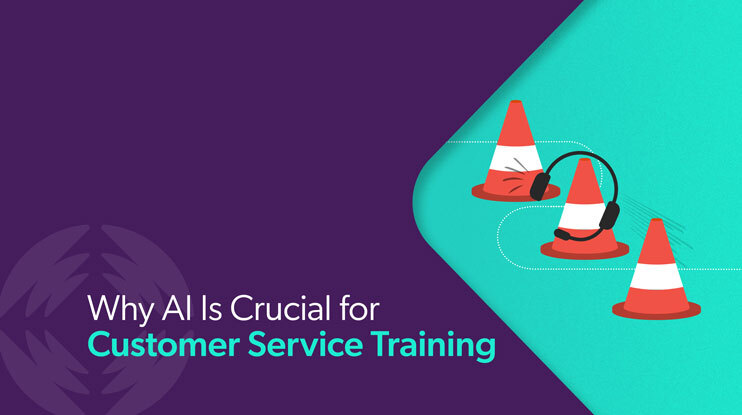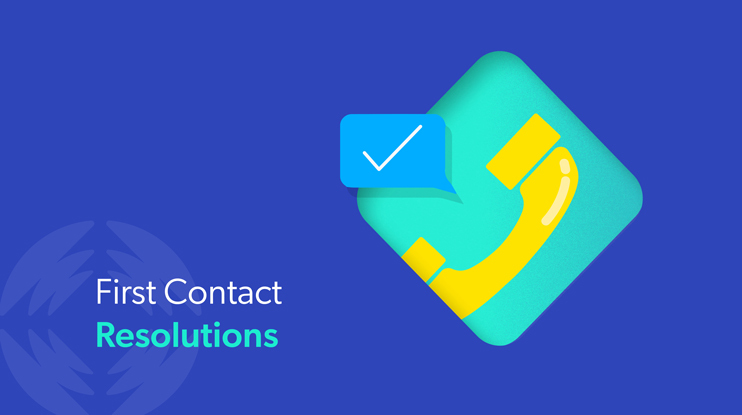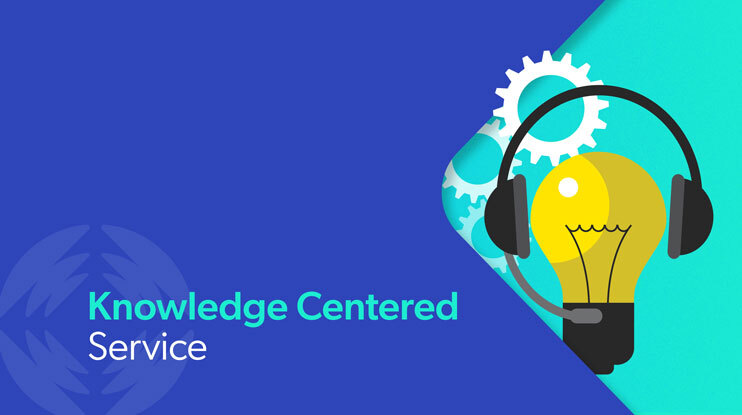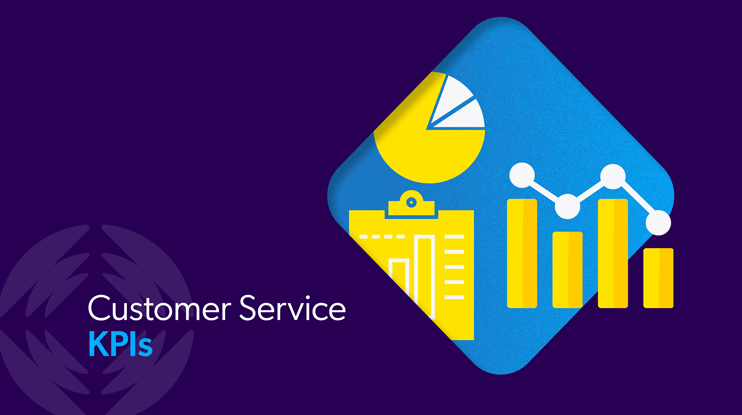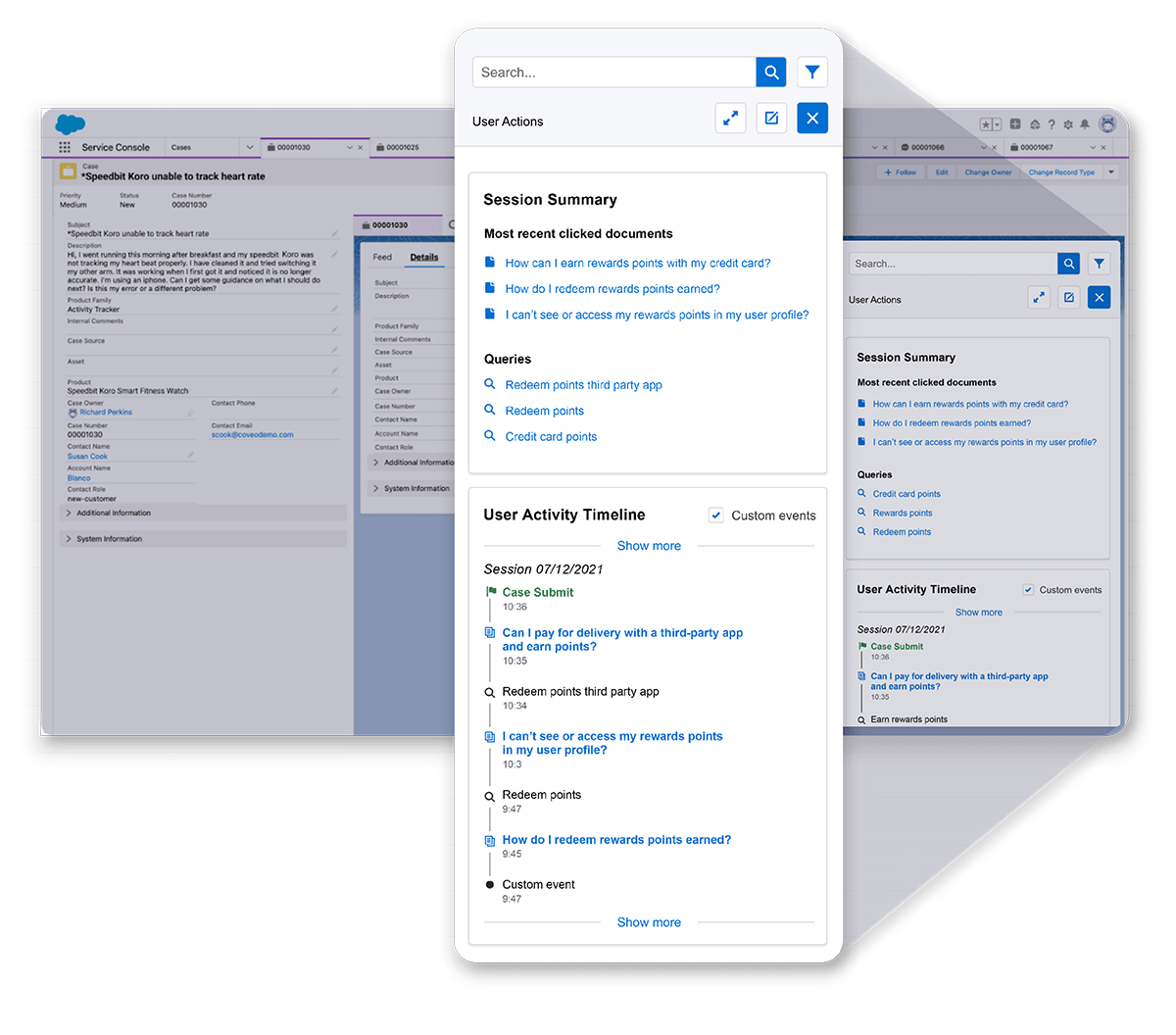Customer service may be just one slice of the overall customer experience, but it has a big impact on how effectively (or not) your organization is managing customer expectations and facilitating customer success. Offering excellent customer support is a mix of digital customer self-service and a robust customer service training plan for your contact center.
After all, the heart of your contact center is that human touch customers want. This means your care center can be a potential growth center, with each customer interaction an opportunity to improve retention and introduce customers to new features and products. As such, training customer service representatives (CSRs) is extremely important so that customer service representatives can accurately represent your business. It ensures your CSRs have the knowledge, customer service management skills, and tools they need to meet and exceed customer expectations.
Companies that excel at customer service training often adopt two tools: Knowledge-Centered Service (KCS)®* and AI search to ease the collection and circulation of knowledge. First, let’s get into the nuts and bolts of customer service training.
What Is The Purpose of Customer Service Training?
Customer service training aims to improve customer satisfaction by equipping agents with the essentials they need to handle customer inquiries, work with difficult customers, and provide overall good support effectively. Training focuses on instilling a customer-centric mindset in all team members.
A key goal of improving customer service skill sets is to help customer service agents understand the importance of their role in the customer experience.
Most might think of customer service as post-purchase issue troubleshooting, but it can really be much more. Customer service agents are brand ambassadors. When creating a customer service training course, incorporating service best practices into management training programs, or embarking on any type of learning initiative, it’s important to know which skills you should focus on — we’ll dive into that now.
Relevant Reading: Diamonds in the Rough – How AI Enables Your Contact Center to Generate Revenue
What Are 8 Must-Have Customer Service Skills?
The ideal customer service representative possesses a balance of knowledge, patience, professionalism, and resourcefulness. In your customer service training program, you should strive to cultivate the following eight qualities in your reps:
Friendliness
A positive, friendly attitude helps put customers at ease and makes them more receptive to assistance.
Patience/good listening
Customers should feel like they’re being heard and that their inquiries are important, no matter how simple or complex they may be. Teach customer service agents active listening skills so they can fully understand a given customer issue.
Empathy
Good reps strive to understand problems and questions from even an angry customer’s perspective. Encourage customer service professionals to take breaks between calls and regroup after difficult customer interactions. This lets them refocus and helps prevent customer service interactions from feeling robotic or perfunctory.
Product Knowledge
Equip reps with the comprehensive knowledge about the products and services they’re supporting. A platform that offers features like an Insight Panel puts information about products and customers right at their fingertips.
Communication
Agents often need to communicate complicated information to frustrated customers. Strong written and verbal communication skills combined with an ability to leverage a variety of tools (e.g., chat, email, phone) work together to communicate the most effective customer service response.
Problem-Solving
When customers reach out for help, they’re looking for a rep who can quickly resolve their issue. So, it’s important to equip reps with time management training, plus the resources they need to troubleshoot quickly but effectively.
Organization
An effective customer service rep is organized and efficient, can multitask, and has strong project management skills so they can prioritize tasks effectively. You support them with a feature like Coveo’s Personalized Agent Full Search, which reduces the time agents search for information by putting everything they need in one place.
Time Management
Effective customer service training should emphasize time management as a critical skill. It’s more important than ever for reps to manage their time effectively. Quickly assessing a customer’s issue, efficiently navigating their company’s customer service software, and knowing when to escalate an issue are all key time management skills for customer service reps.
What Are Some Excellent Customer Service Examples?
Real-world customer service examples illustrate how excellent service leads to customer loyalty, brand advocacy, and happy customers. Here are three examples from companies that get customer service right:
Chewy goes above and beyond to help customers
Virtual pet retailer Chewy empowers its customer service reps to make their own judgment calls when it comes to delivering exceptional service. In a recent example of this, a Chewy employee sent a customer flowers and a handwritten sympathy card when the customer inquired about returning specialty food because her dog had died.
Chewy also gave the customer a refund for the food and suggested the customer donate it to a shelter. The customer was so touched, she Tweeted about the incident. The Tweet went viral, with over 740,000 likes, nearly 48,000 Retweets, and a litany of responses from other pet owners who shared their own great experiences with Chewy.

Zappos creates a hassle-free return process
Online shoe and clothing retailer Zappos has great customer service baked into their business model. They offer free shipping and free product returns on all purchases, which makes it easy to try on items and ship them back if they don’t fit or aren’t what the customer expected. This is particularly helpful when it comes to buying shoes since fit and style are difficult to assess virtually.
Zappos also gives customers an entire year to return a product, and they emphasize personalized service. For example, Zappos will call a customer if there’s a snafu even when the return process is initiated virtually (e.g., if the price of the item being returned changed and this isn’t reflected on the return amount).
Qatar Airlines creates a passenger-first environment
Qatar Airlines was recently voted the world’s best airline by AirlineRatings.com because of its exceptional customer service which includes an easy online booking process that holds flights for 72 hours.
In a great example of customer-centric service, Qatar Airlines operates out of the smallest terminal at Heathrow Airport in London, making it much easier to check in and go through security versus larger terminals. At a time when flying is rife with inconveniences and frustrations, Qatar puts customer comfort first in many ways. This focus on preventing friction and keeping customers happy is present throughout their entire customer service process. It translates to exceptional travel experience for customers while reducing the stress and number of service requests for Qatar Airlines’ support staff.
How to Improve Customer Service Training
Good training relies on comprehensive guidance from peer leaders who act as mentors to ensure new agents understand how to leverage and benefit from customer service technology tools and processes. The goal with training is to make sure every agent has the information they need at their fingertips so they can provide excellent customer service – no matter how complex the inquiry.
In McKinsey’s 2023 State of Customer Care Survey, 57% of customer care leaders expect customer service calls to increase by 20% over the next two years. These calls are only getting more complicated.
Offline and online customer service training programs should support and teach agents to avoid burnout. This helps reduce attrition and keeps your experienced customer service reps on the front line longer to provide better customer experiences.
Build Training Around Peak Hours
Know your peak customer service hours for inbound calls versus email or chat and consider this when structuring your customer service training program. You’ll want to make sure you have enough customer service reps available to address customer complaints and meet customer demand during these peak hours.
Identify Upskilling and Reskilling Opportunities
Results from the latest McKinsey survey note that staff turnover has slowed from its height during the pandemic, but employee morale is low and there’s a critical need for upskilling and reskilling programs, particularly in light of the fast adoption of new technologies. Burnout, stress, and overwork are one of the top reasons that employees leave. Feeling undervalued is also at the top of the list. That’s why it’s crucial to create a training environment that rewards success and fosters employee development.
Technology Education Encourages Adoption
Technology plays a big role in how customer service is delivered, which is why comprehensive training around how to incorporate new technologies—and leverage it to its potential—is important. Automated customer service software helps reps resolve customer inquiries faster and more efficiently. But the technology is only as good as the customer service agents using it, which is where a stellar training program comes in.
8 Customer Service Training Best Practices
Below, we provide eight best practices that rely on data, peer coaching, and analytics to help inform and improve your customer service agent training program. These best practices work together to expand knowledge across an organization .
1. Unify your knowledge
Many organizations, particularly those in the public sector, have a robust content library housed within a knowledge stack that includes tools like SharePoint, Microsoft Knowledge, and Confluence. But often, this information isn’t easily accessible to customer service reps.
The first step in helping customer service agents find and leverage this knowledge is to create a single, centralized repository – or unified index – of relevant content.
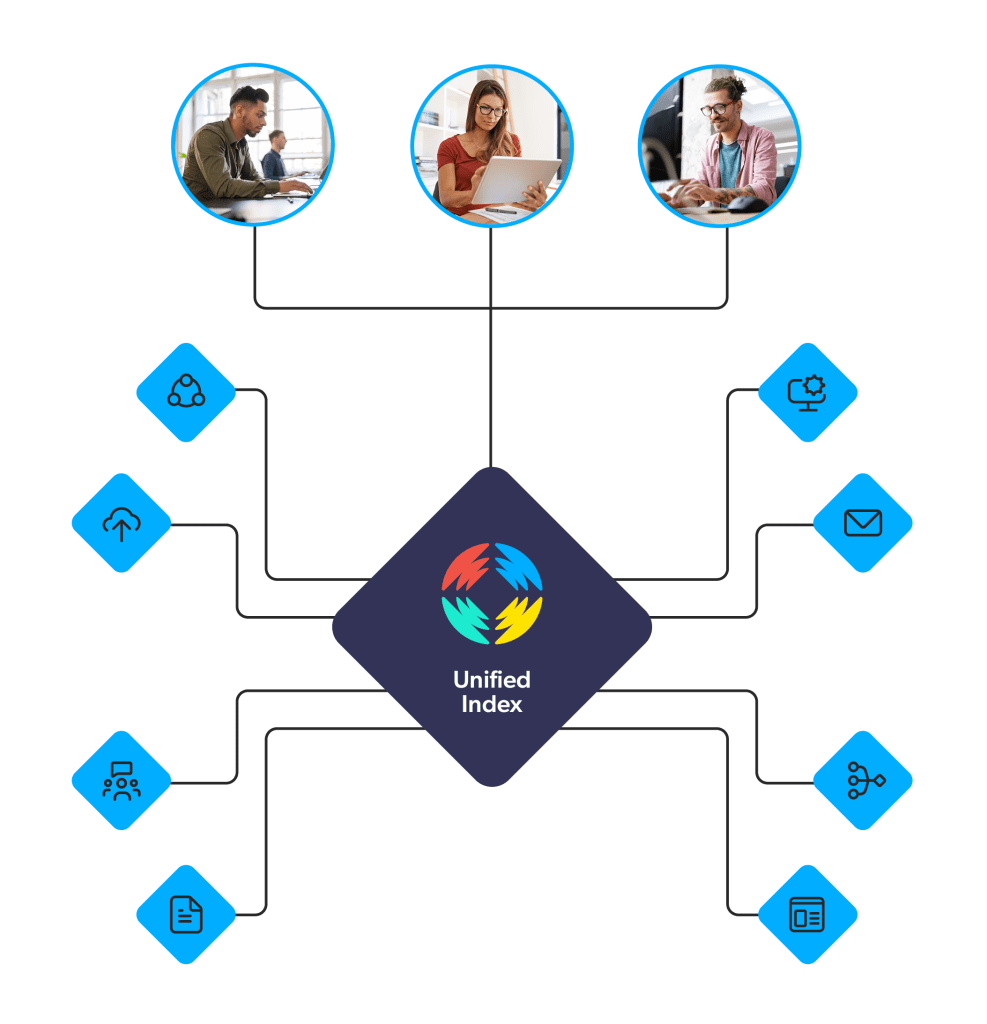
Centralizing access to knowledge sources allows your customer service reps to search for case-related articles, community discussions, and even internal company wiki pages – all within the context of their customer service interaction. This provides instant access to the resources needed to quickly resolve customer issues.
AI-powered search engines like Coveo support this type of knowledge centralization so that assets and information can be retrieved from a single search interface. Educating service teams about this functionality can be incorporated into your time management training approach with your agents.
2. Get everyone on the same page
When you’re trying to train customer service reps on KCS principles, it’s important to create a shared vision for what customer success looks like. This could be anything from adopting new technologies like AI-powered search to changing organizational structures. But whatever the goal, it’s important that everyone is working towards the same endgame.
While the steps to realizing that vision may vary by team or solution, what unites everything is personalization. Look at every source that you’re bringing in through the lens of personalization.
It’s personalization that serves the most relevant content for the right person at the right time. Personalization also allows you to continually engage with each source as your knowledge base – and customer service team – grow. AI search makes it possible to adapt to this growth by processing large amounts of data and learning from it. It gets better over time. Reps also get better at handling difficult customers and inquiries, which reduces frustration and improves overall customer satisfaction.
3. Teach your agents to be search experts
Most customer service reps are familiar with using a basic search engine like Google, but they may not know how to get the most out of your company’s knowledge management system. It’s important to train customer service reps on how to effectively search for information so they can find the answers they need – quickly and easily.
When a customer service agent is struggling to find an answer, pair them with a more experienced agent who can teach them how to use the search tool. Make sure that when people are searching, they’re finding results, and then they’re sharing those results with customers.
Training not only reinforces good habits, but also helps customer service reps feel more comfortable using the knowledge base. This increased confidence can lead to better customer interactions and improved customer success rates.
4. Augment manual search with Insight Panels
An Insight Panel is an AI search feature that brings the information from your unified index into the customer service agent’s flow of work. Powered by artificial intelligence, these panels show what a customer did on your website before submitting a case. This includes content consumed, so the agent doesn’t make the mistake of suggesting something a customer has already tried.
Insight Panels also make relevant information instantly accessible in the context of a given case, reducing the laborious process of manual searching and the confusion of toggling between windows or flipping between tabs.
They also provide customer service reps with a valuable feedback loop. They can see which articles are being accessed most often and use that information to improve the quality (and speed) of their support. This is particularly helpful to new reps, particularly if they’re learning primarily from online customer service training interactions.
5. Use coaching to improve agent experience
No discussion of KCS would be complete without explaining and celebrating the value of agent coaching. It’s easy to build a knowledge base by asking people to write articles and applaud when they write them. But if you don’t coach your agents, your KCS program can atrophy.
Coaching, particularly from peers rather than managers, keeps agents engaged with the system and ensures they use it correctly. Dive into a coaching program that provides peer support and encourages agents to share their knowledge.
Build goals into your coaching program that focus on helping agents improve their search skills, understand how best to use AI when searching for information, write better articles, and solve customer problems more quickly. And don’t forget about the importance of analytics.
Here’s a free coaching report template you can use to document coaching sessions and their outcomes:
Get Your Copy: Customer Service Training Coaching Report
6. Use data to guide your coaching program
Your KCS program will generate a lot of data – about the searches being conducted, the articles being written, and the cases being resolved. While data can help you improve the program, keep the data points you review simple and flexible. Create coaching reports that focus on what’s important – successes, challenges, opportunities, and follow-up items.
Analytics should help you draw conclusions and inform agent coaching. For example, some specific usage analytics that coaches can monitor from Coveo’s system include:
- Search Event Count
- Manual Search Event
- Click Event
- Attach to Case
Need help getting started with service analytics? Here are some scenarios on not just parsing them, but also tying them into coaching sessions:
Relevant Reading: Guide to Using Insight Panel Analytics to Amplify Agent Coaching
7. Refine your training approach based on outcomes
AI-enhanced customer service analytics can tell you if agents are proactively searching for answers, finding relevant information for their cases, and sharing this information with clients. The data provides meaningful insight about how agents interact with your knowledge base.
On the other hand, one-to-one training sessions, combined with coaching conversations, and observations of how agents use the system on a day-to-day basis, allow for a deeper understanding of the agent experience — and how to improve it. These sessions can focus on optimizing the use of AI search features, ensuring agents are leveraging the full potential of the technology.
This information should be used to identify areas where reps need more training. It can also identify knowledge gaps within your organization, providing you with the insight you need to create additional content or update existing material.
8. Choose the right trainers
One final note on training – when it comes to choosing trainers, it’s important to select individuals who are excited about the training program. Not everybody can be a coach. Not everyone should be and not everyone wants to be.
Look for people who are interested in a mentoring and peer coaching environment, but also consider personality. Some people choose to focus their careers more on people management, while others are more tactical.
You want individuals with a skill set that includes strong communications and a comfort with working with peers and having one-on-one conversations. Customer service analytics can help your coaches identify issues with the customer service process and address them with targeted training. (Hint: This is where that coaching report comes in handy!)
Achieve Service Excellence With Excellent Customer Service Training
A successful customer service training program relies on accountability, so weekly reports posted for program managers to review provides clarification about the issues being addressed and confirmation that the program is working.
Ongoing training ensures that communication flows regularly between your managers, mentors, and customer service reps. This is particularly impactful in a work-from-home/remote environment where customer service employees may need more support, particularly when onboarding and learning how to navigate a new knowledge base. AI search, which can create personalized learning paths based on each agent’s search patterns and performance, is incredibly helpful in this scenario.Customer service analytics — and the associated follow-up meetings — tie it all together. They help showcase whether your customer service agents are engaging with your knowledge base and each other. Using this data to inform employee training ensures that training is well-rounded for the individual agent, which can lead to better service for customer needs, and better long-term customer retention.
Dig Deeper
Giving your agents the training needed to provide an empathetic response is one ingredient for a great support experience. But if your end-to-end journey is a collection of siloed touchpoints, you might be setting your customer support team up for failure.
Based on a survey of 4,000 adults across the U.S. and UK, the 4th edition of Coveo’s CX Industry Report will help you provide a holistic, interconnected digital customer journey. And, show you why AI Search and GenAI might be your missing piece.
*KCS® is a service mark of the Consortium for Service Innovation™

